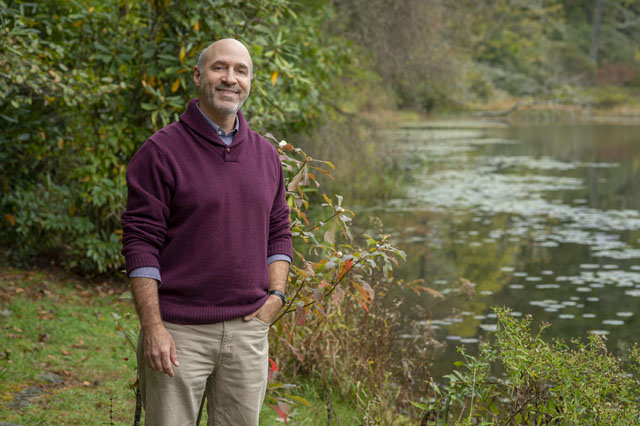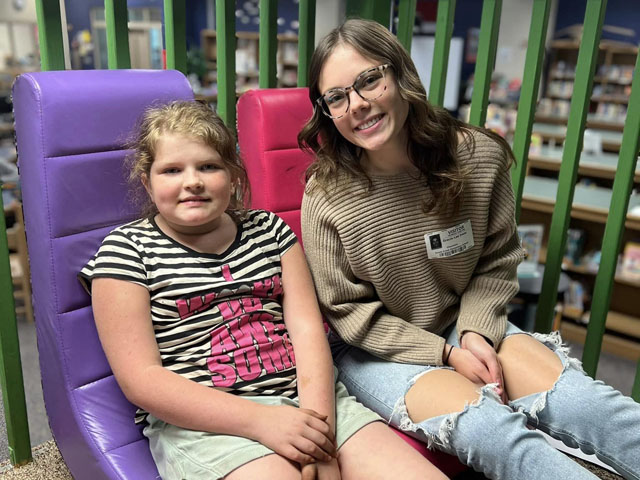Closing the Gender Gap in Leadership
02 Dec 2023
Carol Seymour helps global companies empower female talent
By LISA GRAY YOUNGBLOOD

According to the World Economic Forum, work force parity for women is over a century away. Yes, you read that correctly: 100 years. To be exact, 117 years, too many for your grandchildren or their children to benefit.
We are talking about parity in leadership, both in the private sector and government, and that should concern us all. “Making progress on closing the gender gap is crucial for ensuring inclusive, sustainable economic growth. At an individual organization level, gender strategy is … essential to attracting the best talent and ensuring long-term economic performance, resilience and [even] survival. Evidence indicates that diverse groups of leaders make more fact-based decisions that result in higher quality outcomes. At an economy-wide level, gender parity … [is] critical for financial stability and economic performance.”1
So, what do we do? Our current solutions are not working. We need new ideas, which is where Carol Seymour, founder and CEO of Signature Leaders, comes in. Seymour argues for an entirely different approach, and the numbers support her. “We need new solutions,” she says, “and those solutions are hiding in plain sight.”
Seymour began her career in large global companies, where she found precious few women in senior ranks. “I spent more than 30 years in that environment and was often the only: the only female employee at the table, the only female in industry sales and the only female executive, which meant I had no representative role model.” As you may have surmised, Seymour persisted, becoming a sought-after business leader and seasoned global executive known for catalyzing growth. But she recognized there was a problem, and she knew innately that, one day, she would become part of the solution.
1 For the full report, go to www.weforum.org/press/2023/06/gender-equality-is-stalling
In 2006, Seymour joined a start-up company that built private memberships for senior executives. “I built a global CEO Group, a global Heads of Supply Chain, Heads of Human Resources (HR), Heads of Strategy and more. Then in 2010, as I was facilitating a discussion on diversity with 70 global heads of HR, one member stood up and chastised her peers for not doing enough to advance women. The group then turned to me and asked if I would do something about it.”
The answer was yes. “In some ways I had already been doing this. I often counseled women in career choices and strategy, but I knew the problem at hand needed more than that. I wanted to create a leadership program around driving impact, creating greater influence and building stakeholder relationships, all of which are critical in making a difference.” She also wanted to encourage women to be true to themselves. “I wanted to create a program for women, not about women. I wanted to break the myth that women somehow needed to be fixed or forced to fit within a male paradigm.”
With that in mind, Seymour founded Signature Leaders in 2013. The name was not an afterthought; it was, and continues to be, the heart of the program. “Everyone has their own unique signature,” she explains. “No two are alike, just as no two leaders are alike.” She argues that all leaders should embrace their whole selves. An authentic and trusted leader has both a professional and a personal life. “You can’t have a leader walk through the front door of their office and leave half of who they are behind. Signature is about leadership and life.”
Today, Signature Leaders has more than 3000 graduates across six continents. More than 140 global companies have participated, with many companies funding a hosted session from their own locations, such as Nestle in Vevey, Switzerland, Manulife in Singapore, Maersk in Copenhagen, Prudential in NYC and eBay in Palo Alto.
“We created an authentic, trusted leader concept before it was sexy, and although we have evolved in our offerings, this core value has not changed. Each person, no matter their position in the company, spends the first portion of the program delving into what makes their signature unique. It’s often the hardest part of their journey and, at the same time, a gift to spend such focused time on oneself.”
After watching her in action in Barcelona, I now understand the complexity of the question and the ripple effect of answering it. Identifying your unique signature is not easy, which Seymour acknowledges by offering not only personal stories but also tools to unearth what attendees may have forgotten about themselves. “Your signature is about who you are and how you do what you do. It is not about your role in the company or your job description.”
As successful as this leadership program has been, however, Seymour knew there was more she could do. “There is so much talent out there, and too much of it stays hidden.” She shared a story about one Signature participant who had been a senior director for six years. Each year the woman asked her manager how she could become a VP, and each year he told her she was doing all the right things and should just stay on course. However, year after year, she was overlooked for the promotion. Finally, she left to take a VP role elsewhere. “She explained to me that although she wasn’t anyone’s problem, she wasn’t anyone’s priority either. That’s when a light went on for me. I needed to work within the corporate culture and find a way to make the acceleration of these exceptional women a priority.”
This is where Seymour’s work exploded. She evaluated the ways in which companies sought to promote talent, and she realized that the technique was part of the problem. Traditional wisdom suggested that change should come in the form of sustained mentorship, but if mentorship really worked, why hadn’t we seen the growth we so desperately needed? Seymour argues that the focus of mentorship is its downfall.
Mentorship involves two people in private conversations. While the mentee benefits from hearing the mentor’s experiences and may gain guidance on what she can do, once she leaves the conversation, she is charged with taking action on her own. What Seymour suggests instead is action in the form of Sponsorship. Unlike mentorship, “Sponsorship is about visibility and velocity.” A sponsor doesn’t tell an aspiring leader who or what to be but rather offers a stage upon which that individual can realize her strengths and enjoy recognition of her value.
“Sponsoring is a journey and a frame-of-mind. It doesn’t have to be a formalized program. It invites leaders to see new potential in their roles and to accelerate talented employees without putting their own reputations on the line. It involves opening doors and making connections to others in the organization. If you create visibility, velocity naturally follows. And leaders at all levels can take these actions.” Seymour adds that the gift is in its simplicity. “Small, intentional actions can bring about a monumental cultural shift within the company.”
Signature’s sponsorship journey rests upon three 3 main pillars: Explore, Enrich and Elevate. In the programs, Seymour is explicit in her training for each pillar, offering examples and exercises to engage and energize current leaders. Watching her at work in Barcelona, I could feel the enthusiasm in the room, and I realized that companies have long wanted to address gender parity but simply did not have the tools. I expected skepticism, but what I saw was excitement.
EXPLORE – What lights up the employee?
“The exploration process is really about getting to know a person so you can form your own opinion. For many, this can be challenging, and it definitely requires authenticity. You will need to build trust and genuinely care about another’s success. We teach executives how to figure out what lights up the employee they are considering sponsoring. What are their strengths and passions? What do they worry about? What do they long for?” Seymour upends the adage that curiosity killed the cat. “It’s not true. Curiosity elevates the cat. People want to be seen and heard.” She encourages all leaders to lean in and learn, and she offers specific strategies to effortlessly and comfortably do so.
It boils down to this: “Be the listener. Statistics report adults ask only a few questions a day, and these are not open-ended questions inviting response. To invite response, listen as if the other person is telling you the most important thing you have ever heard. Then lean in and say, ‘Tell me more.’ It is not nearly as hard as people think.” Although listening has become something of a lost art in our society, we are all capable of becoming excellent listeners, and Seymour taps into this and offers explicit tools to ease the way.
ENRICH - Offer opportunity.
The second pillar is to enrich, which means “to broaden the employee’s network through your own network. Increasing recognition through exposure is vital. In this phase, it is also important to understand how others perceive the employee and openly share the perception of that employee—especially when it is negative.”
Seymour shared a story of her early career and the shock she felt when she realized how she was perceived within her company. “I went to work early, stayed late, kept my head down and worked. My thinking was if I worked hard enough and did good quality work, I would excel. I really thought it was that easy.” But the problem was people found her unapproachable. She was always in her office, head-down, entirely disengaged and separate from her co-workers. One day, a friend within the company explained to her that what she was actually doing was isolating herself. She had become an island, and no one fights for an island. Seymour, a kind and eminently approachable person, was shocked, but she immediately saw the wisdom of the words. After that, she made a point to get to know her co-workers, and it made all the difference.
“How people perceive you is how they treat you. It impacts whether they will want to spend time with you,” she explains. “What people think matters—especially when it is an unfair reflection of who you are. The Sponsor can help developing leaders see gaps and strategize to close them.”
But at the heart, this stage is about opportunity. Making an employee a priority means “offering her high visibility projects, encouragement and, when appropriate, insisting she is ready to take on new challenges.” These new opportunities and challenges are not about the Sponsor. They are about the employee. The Sponsor is merely offering up opportunities to allow others within the company to form their own opinions about her. Enrichment is exposure through opportunity.
ELEVATE - Use your megaphone.
Once the potential Sponsor has gotten to know the employee and has facilitated opportunities for that employee to grow and gain exposure, the potential Sponsor can become an actual Sponsor. If that employee has risen to the challenge, it is time to fight for them. “Use your megaphone to let the right people know how great the employee is. This is an active phase. This is true sponsorship.” She argues we cannot assume this will happen organically. It likely won’t. Action is the guarantee. Make this talented employee a priority.
Conclusion
The Signature Sponsorship approach increases visibility of female talent. Visibility increases velocity, and velocity changes the game. You can accelerate people without putting your reputation on the line. Simply learn where they have passion and interest and how their value can be fully tapped. Introduce them to other leaders and seek out opportunities where they can grow and shine. None of this is hard. It is, however, intentional, and it can – and will – bring about a cultural shift within the company that will not only benefit female talent but, ultimately, the company’s bottom line. “We are talking about opening up the aperture,” she explains. “We are talking about real solutions.”
Seymour adds that Sponsorship should not be limited by position and rank. The label Sponsor is typically given to a senior person with clout inside the company, but that’s too few. “We encourage leaders at all levels to be sponsors,” she says. “Any leader within the company who can raise an employee’s visibility can raise her velocity.” When it comes to elevating women, the more, the merrier.
As to the future, Seymour is optimistic. “I see brilliant women bringing their full signatures forward every day, and I see companies that don’t want to check boxes but rather take action and try new approaches. With this acceleration, I believe we can change the narrative on parity and reach it much more quickly than anticipated.”
To learn more about Carol Seymour or Signature Leaders, go to www.signatureleaders.com.













